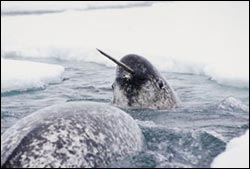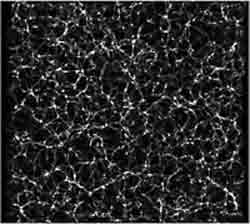Coating of tightly packed particles on bubble surface supports stresses to stabilize shape
Researchers at Harvard University have demonstrated that gas bubbles can exist in stable non-spherical shapes without the application of external force. The micron- to millimeter scale peapod-, doughnut- and sausage-shaped bubbles, created by coating ordinary gas bubbles with a tightly packed layer of tiny particles and then fusing them, are described this week on the web site of the journ

Harvard School of Dental Medicine Researcher Announces Findings Today
Today, Harvard School of Dental Medicine (HSDM) researcher Martin Nweeia, DMD, DDS, answers a marine science question that has eluded the scientific community for hundreds of years: why does the narwhal, or “unicorn,” whale have an 8-foot-long tooth emerging from its head, and what is its function? Nweeia, a clinical instructor in restorative dentistry and biomaterials sciences at HSDM, will be presenting his

Clues revealed by the recently sharpened view of the Hubble Space Telescope have allowed astronomers to map the location of invisible “dark matter” in unprecedented detail in two very young galaxy clusters.
A Johns Hopkins University-Space Telescope Science Institute team reports its findings in the December issue of Astrophysical Journal. (Other, less-detailed observations appeared in the January 2005 issue of that publication.)
The team’s results lend credence to
For a mathematician, Joseph Biello spends a lot of time thinking about the weather. But the UC Davis assistant professor isn’t looking out the office window. He is using mathematical theory to build a model of the Madden-Julian Oscillation, a tropical weather pattern that influences drought and rainfall in the western U.S.
The Madden-Julian Oscillation was discovered in 1972 when researchers looked closely at meteorological data. It lasts 30 to 60 days and appears as cl
Glaciers, rivers and shifting tectonic plates have shaped mountains over millions of years, but earth scientists have struggled to understand the relative roles of these forces and the rates at which they work.
Now, using a new technique, researchers at the University of Michigan, California Institute of Technology and Occidental College have documented how fast glaciers eroded the spectacular mountain topography of the Coast Mountains of British Columbia.
Their work
Absent any climate policy, scientists have found a 70 percent chance of shutting down the thermohaline circulation in the North Atlantic Ocean over the next 200 years, with a 45 percent probability of this occurring in this century. The likelihood decreases with mitigation, but even the most rigorous immediate climate policy would still leave a 25 percent chance of a thermohaline collapse.
“This is a dangerous, human-induced climate change,” said Michael Schlesinger, a professo